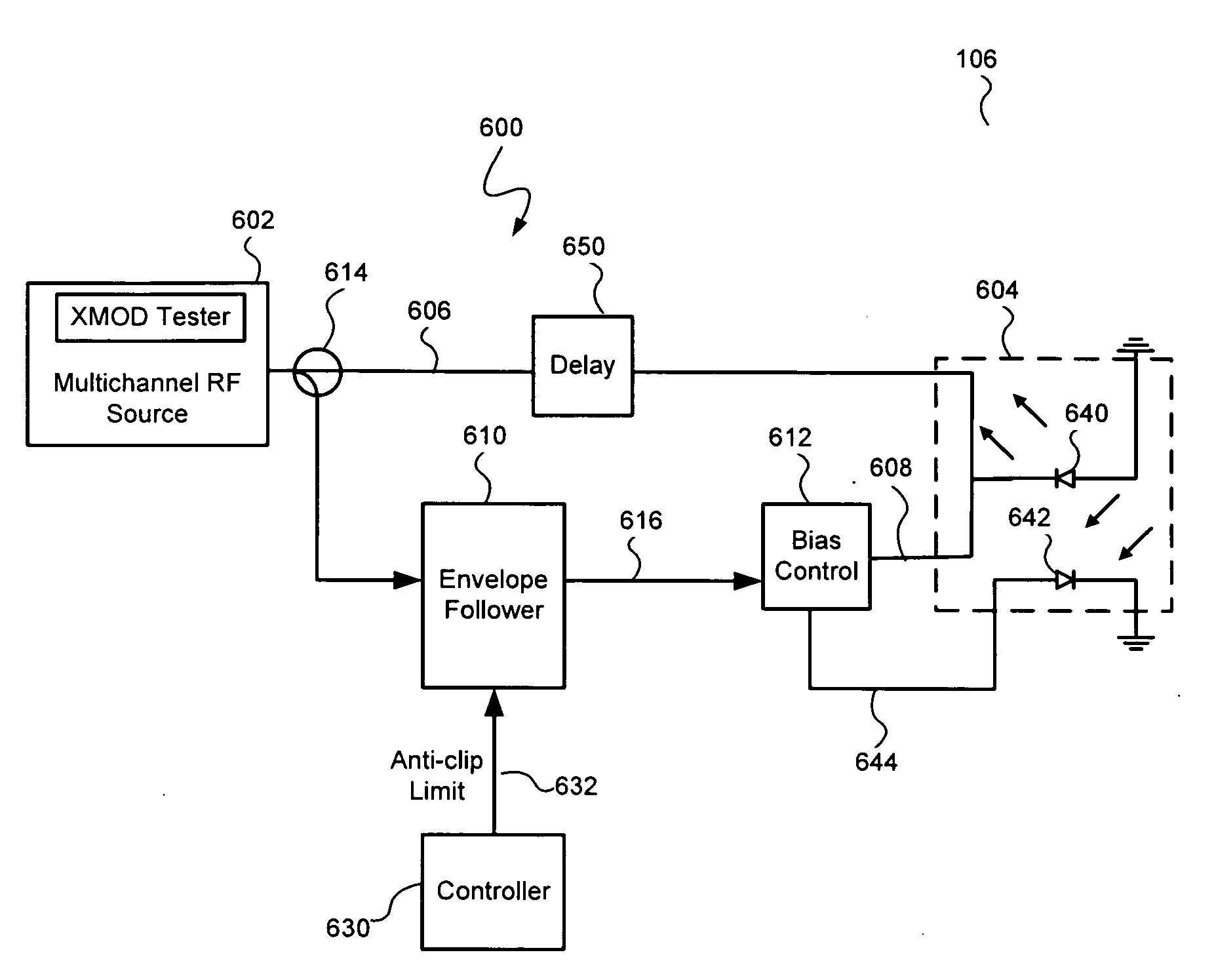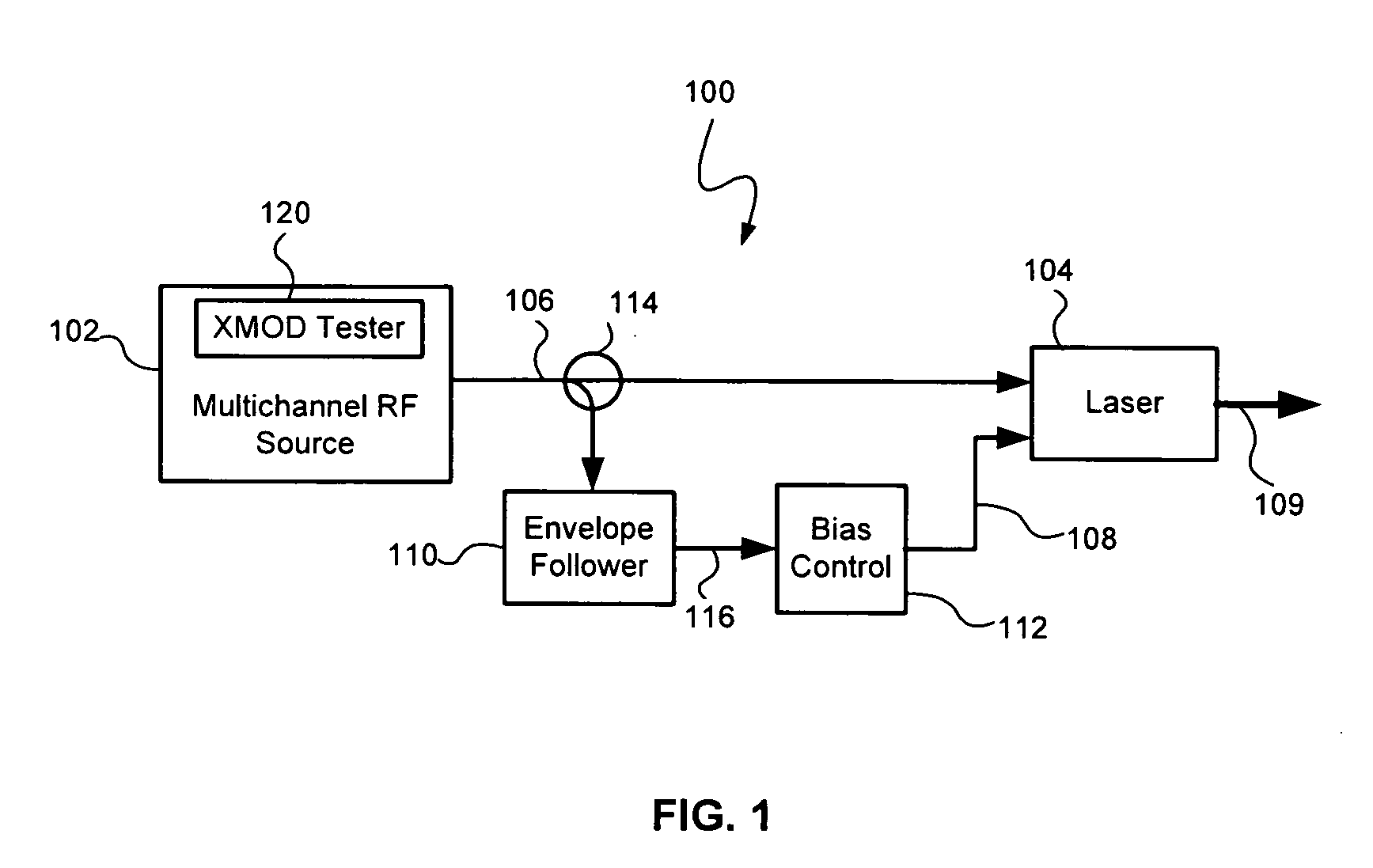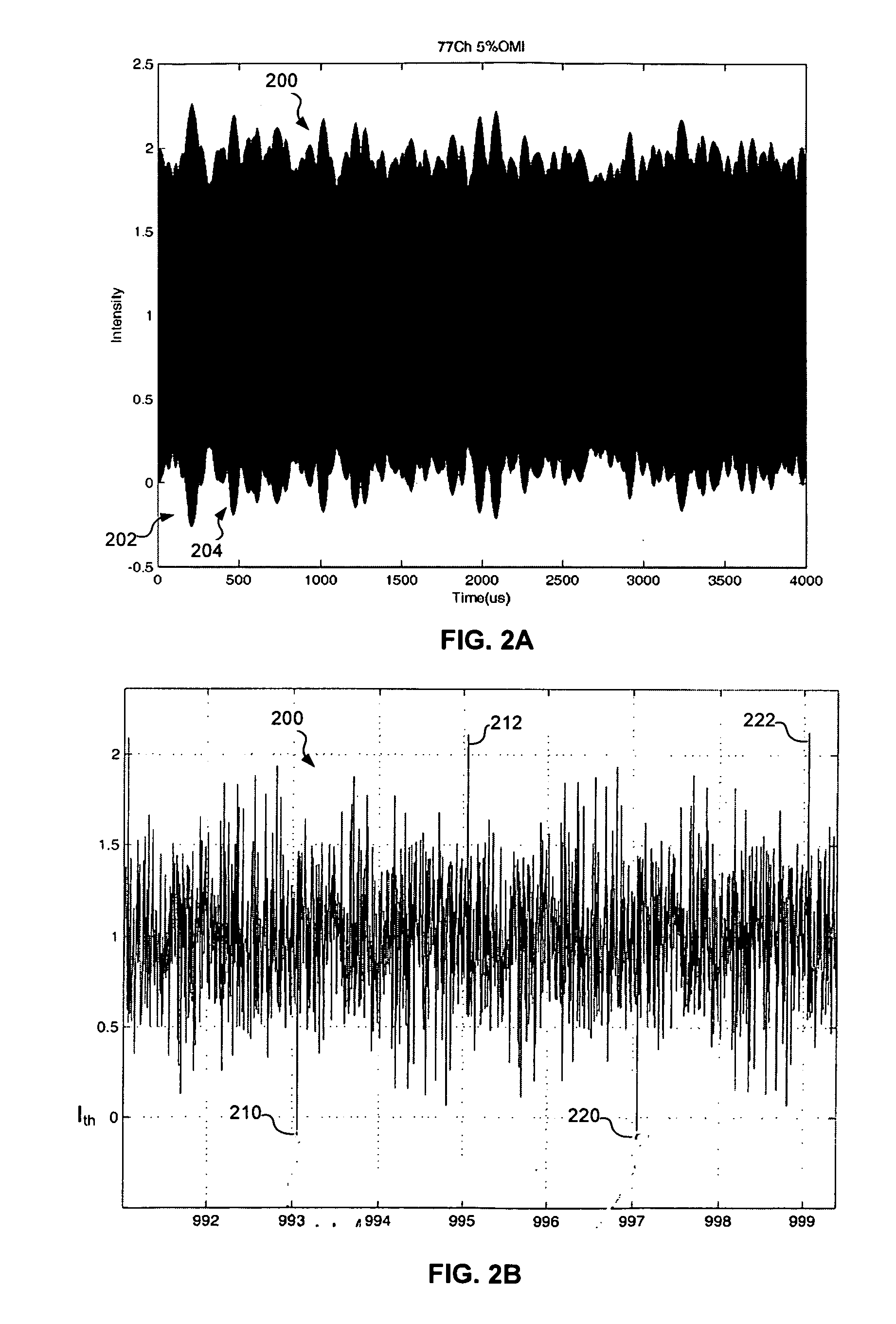Reducing cross modulation in multichannel modulated optical systems with Anti-clipping
a multi-channel modulated optical system and anti-clipping technology, applied in the field of modulated optical systems, can solve problems such as clipping, bit errors in the optical output of lasers, and added to analog channels even more sensitive to noise arising
- Summary
- Abstract
- Description
- Claims
- Application Information
AI Technical Summary
Problems solved by technology
Method used
Image
Examples
Embodiment Construction
[0021]Referring to FIG. 1, a modulated optical system 100 with anti-clipping, consistent with embodiments of the present invention, is capable of providing both reduced clipping and reduced cross modulation. The modulated optical system 100 generally includes a laser 104 that receives a multichannel RF signal 106 from a multichannel RF source 102. The laser 104 may include a RF input that receives the multichannel RF signal 106, a bias current input that receives a bias current 108, and an optical output that produces a modulated optical signal 109 in response to the RF signal 106 and the bias current 108. The system 100 may also include other circuitry and / or components (not shown) between the multichannel RF source 102 and the laser 104 such as, for example, one or more predistortion circuits and a laser driver circuit.
[0022]By adjusting the bias current 108 in response to an envelope of the multichannel RF signal 106, the system 100 reduces or corrects clipping that might occur i...
PUM
 Login to View More
Login to View More Abstract
Description
Claims
Application Information
 Login to View More
Login to View More - R&D
- Intellectual Property
- Life Sciences
- Materials
- Tech Scout
- Unparalleled Data Quality
- Higher Quality Content
- 60% Fewer Hallucinations
Browse by: Latest US Patents, China's latest patents, Technical Efficacy Thesaurus, Application Domain, Technology Topic, Popular Technical Reports.
© 2025 PatSnap. All rights reserved.Legal|Privacy policy|Modern Slavery Act Transparency Statement|Sitemap|About US| Contact US: help@patsnap.com



